
[Article] Chachoengsao: Train Trip Allows For Plenty of Sightseeing Options. Written by Nida Tunsuttiwong
The province of Chachoengsao is probably best known for its famous Bangpakong River and the temple of Wat Luang Por Sothorn, which is home to one of the kingdom’s most revered Buddha images.
While it’s conveniently located just 100 kilometers to the east of Bangkok, until recently the province has seldom been thought of as a potential tourism destination. Recognizing the potential Chachoengsao offers domestic and international tourists, the State Railway of Thailand (SRT) recently organized a familiarization trip to the province by train, calling at several tourist attractions located within a short distance of Chachoengsao Junction.
A Relaxing Pace Our eastbound train departed Bangkok’s main Hualamphong station right on schedule (10.10 am). We gradually left behind the capital's high-rise buildings, passing through the Bangkok suburbs before eventually reaching open countryside, where you can see locals enjoying a rather more relaxed, rural way of life.
On arrival at Chachoengsao Junction, you’ll find several forms of local transport, including songthaew (a pick up with bench seats) and motorcycle taxis, which you can use to get around the municipality to visit its various attractions.
We were fortunate to learn that 'Chitra Konuntakiet', a renowned author, who writes about Chinese culture, was leading our group, so she was able to impart a good deal of knowledge on matters relating to Chinese and Thai culture.
Wat Sothorn Wat Sothorn is best known for its principal Buddha statue, known as Phra Phuthasothon (or Luang Por Sothorn [read more).
After paying our respects to the statue, we headed for a pier located just behind the temple’s new ubosot (Ordination Hall) and hopped aboard a converted, antique rice barge that then made its way up river towards Ban Mai market.
Since there are lots of nipa palm and cork trees growing alongside one side of the river, you'll notice lots of foliage, whereas there is more human-based activity taking place on the other side of the river since it's lined with residences and government buildings.

Before long, we arrived to the Ban Pa Nu restaurant 'Ban Mai market for some lunch.
Meaning ‘new house’ or ‘new village’ in Thai, Ban Mai market was established during King Rama V’s reign (1868-1910). The market, which features numerous vendors selling all kinds of different savory Thai dishes and desserts, is located between rows of one- and two-story wooden homes, which remain in excellent condition.
On Reflection Once we had finished our enjoyable meal, we walked a short distance from the market to an old Chinese temple run by the Mahayana Sect called Wat Chin Pracha Samosorn (or Wat Leng Hok Yi). With about 75 joss sticks clasped between my palms, I paid homage to statues of the Lord Buddha, as well as statues of Chinese gods, which can be found at 31 different locations within the temple compound.
Talented Individuals Next stop was the World Sand Sculpture, which showcases large sculptures produced by a significant number of local and international artists.
Some of the exhibits resemble characters from Thai literature, while others mark historic events or well known sites in other countries, such as the Great Wall of China and the Sydney Opera House, among others. It was enjoyable to watch some incredibly talented local artists at work as they produced ornate sculptures made from sand.
Our next call was a Thai dessert shop called 'Rin', which has been producing mouthwatering desserts for over 30 years. Two of the most popular dishes sold here are Foi Thong (a Thai dessert made with egg yolk, sugar and flour) and Khanom Chan (a layered, sugar-based Thai dessert).
As the afternoon turned into evening, we ventured a short distance away from the town to visit an interesting pottery called Koomwimarndin, where you can either check out its huge range of products, or even try your hand at crafting some items from clay (read more).
Near the pottery's workshop area is a small coffee shop if you're in need of refreshment, or you can venture slightly further afield by visiting the mango orchards nearby.

Before setting off on our return journey to Bangkok, we dropped in at the temple of 'Wat Samanratanaram', which is home to Thailand's largest reclining Ganesha, which measures 16 meters in height and 22 m in length.
The base includes images of Ganesha in 32 different poses, each thought to respond to a different kind of wish.
On arrival at Lad Krabang station, we switched over to the Airport Link service that runs between Suvarnabhumi International Airport and Bangkok's downtown area since it provides a faster service than the regular train service.
The express train, which can reach speeds of up to 160 kilometers per hour, costs 100 baht (US$3.19) for a return ticket, but it should be noted that this service currently operates solely between the airport and Phaya Thai station.
The local city link service that operates at somewhat slower speeds on the same track, however, stops at Ban Tap Chang, Hua Mark, Ramkhamhaeng, Makkasan and Phaya Thai, and the current promotional fare for this service is just 15 baht.
For further information, call the SRT hotline on Tel: 1690, or visit the official SRT website at http://www.railway.co.th/
Photo Credit 'Wat Sothon' by Khon Kung Rom Bin (คนกรุงร่มบิน)
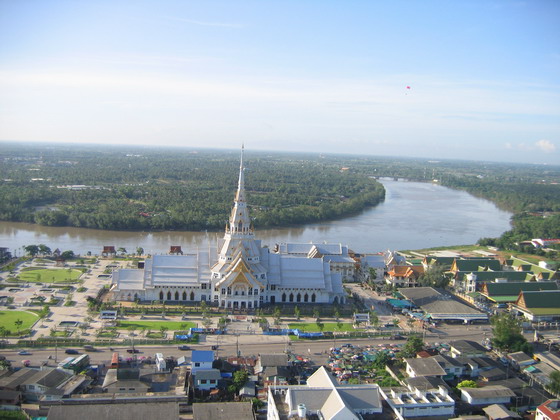
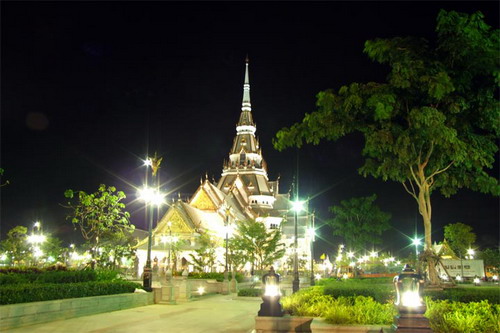
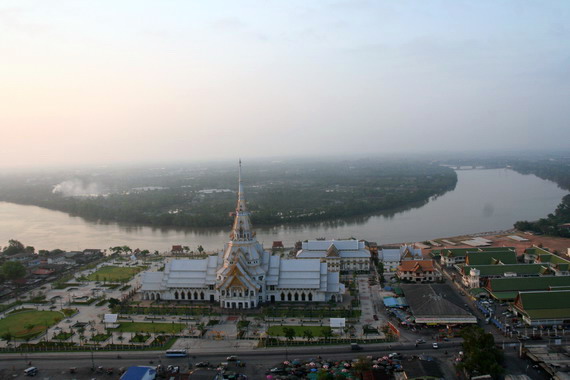
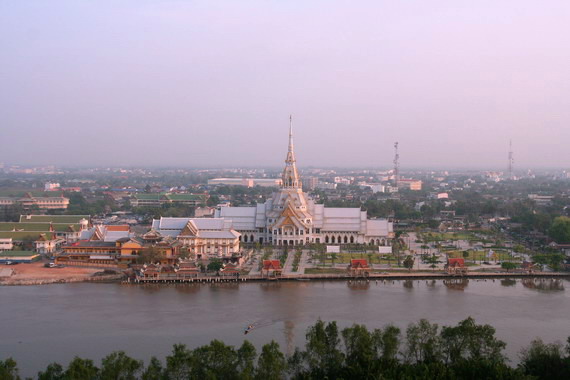

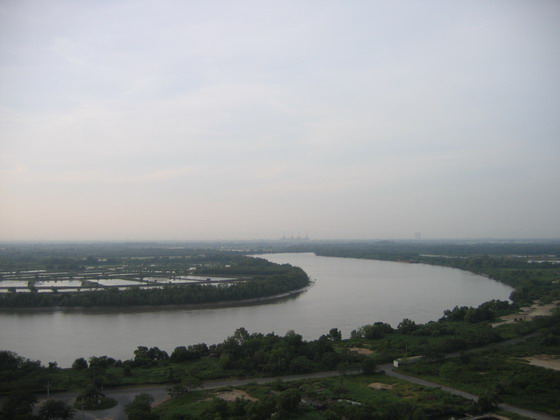

ไม่มีความคิดเห็น:
แสดงความคิดเห็น